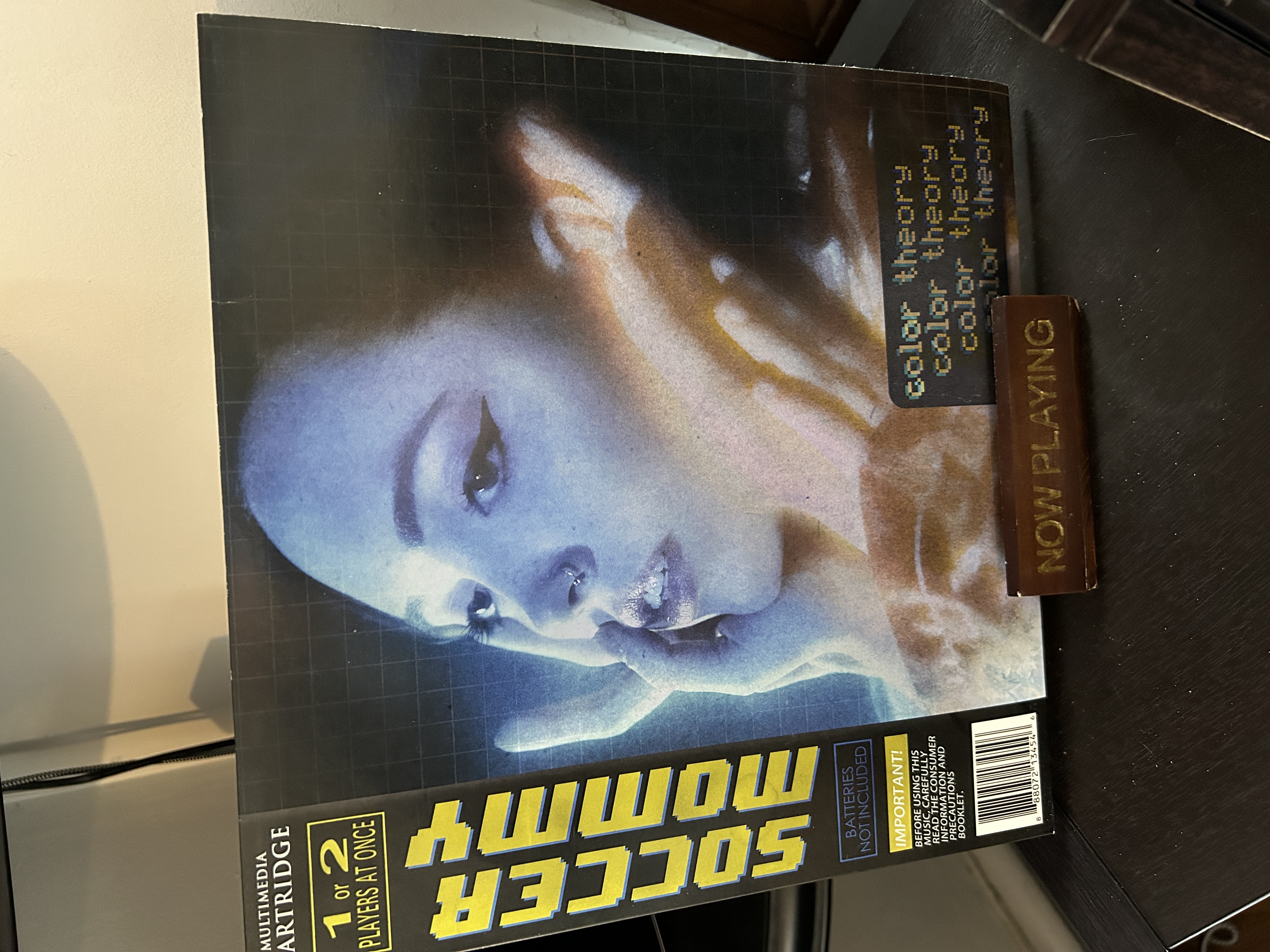
First Anniversary
Published on Dec 17, 2025
Introducing: The IHTOV Zine
Published on Dec 15, 2025
Christmas Music Selections
Published on Dec 14, 2025
The Beastie Boys and Me
Published on Dec 10, 2025
More Liner Notes…
Five Years On: Lockdown Music
by editor Michele Catalano

By the time March 11, 2020, rolled around, I was already knee-deep in anxiety and low-key terror. It was obvious that things were going to get bad, and when they canceled the NBA season that day, they definitely did. Things went from bad to worse rather quickly. Before I knew it, we were all behind our locked doors, shuttered in our houses, with our toilet paper and paper towels and sourdough bread starters. For the NBA and NHL, that signaled the end of the season; for me, it was the beginning of the end of things.
It’s not the fault of Soccer Mommy (Sophia Allison) that her album came out at the end of February, thus ushering in the Covid era. It’s just a matter of circumstance. For me, it was the right place, right time. Soccer Mommy’s Color Theory became my musical mantra, my guide, my solace. I was already deep into it when the shit hit the fan and they sent us home from work, telling us to clean out our coffee pots and mugs before we left because no one knew when we would be back.
It was a scary, uncertain time. The more I watched our governor on TV, telling us it was going to be okay, the less I thought it would be okay. He got in front of the camera every day and did his little thing that would make him a quasi-celebrity, despite his never giving a hint before then that he was compassionate or empathetic. Now he was on my screen, in a crisis, saying nothing in millions of words. I’d leave the channel on in case anything important happened, but at that moment, Andrew Cuomo’s was not the important voice in my life. Sophia Allison’s was. She spoke to me, she spoke for me, she made beautiful melodies that floated around my living room, turning the confines into a safe, soft space.
The pandemic lockdown feels both far removed and as if it happened last week. While Covid still very much exists, the memories of the lockdown fade, as memories do, until we drag them back out on an anniversary, or do or listen to something that triggers them.
Color Theory permeated the first few weeks. I had a crappy stereo at the time, with crappy speakers, and everything sounded muted and slightly off. Welcome to my mental state, where I spent every day feeling muted and slightly off. The pandemic ramped up my anxiety. Everything closing down one by one sent a shockwave through my brain and body whenever I read or watched the news. Work? Closed. Schools? Closed. McDonald’s?? McDonald’s is closed?? I was incredulous at each announcement. This couldn’t be happening.
I sank further into my couch and listened to Color Theory relentlessly. I took to streaming and putting on headphones because my husband at the time did not want to hear it, least of all ten times a day.
The days blended into each other. I did some work from home, but nothing that took more than ten minutes each morning, such as sending emails to panicked attorneys and defendants. I was mostly in the living room, listening to music. It was the only thing I could do. I stopped reading because I wasn’t retaining anything. I stopped turning on the TV because I no longer wanted to see Cuomo or Trump telling me to calm down, or telling me everything was fine. It was not fine. I was not fine.
I bought a new turntable and speakers because, if I was going to be stuck in the house for an untold amount of time, I wanted to make it as pleasant as possible. I started buying more records. I’d play these records—the Boygenius EP, Phoebe Bridgers’ Stranger in the Alps, and Julien Baker’s Turn Out the Lights—when my husband wasn’t home, when I was free to turn it up, to sing my heart out without feeling weird about it, to be depressed and sad and worried without having my feelings negated.
The time at home was wearing on me. While I was holed up in the house, a recluse not of my own making, he was going to clandestine AA meetings every night. I never felt so alone. Which is why I filled my house with the voices of the women who understood me. These albums were the company I craved. Color Theory was a lifeline.
They called us back to work just in time. My loneliness was intense. My husband was hardly home, and when he was home, there was a stiffness to our conversations. Things felt strange and upsetting. I chalked it up to the pandemic making everyone weird. I knew I was being weird. I thought going back to work would set things back to normal.
Covid raged on, despite everything opening up again. If I wasn’t at work, I was home. No restaurants for me, no grocery stores, no outside entertainment at all. I stayed in and listened to my records and tried to remember how to write an essay, how to read a novel, how to do anything besides wallow in a sadness that had permeated my very existence. There was something underlying Covid, something lurking underneath that only listening to my sad girl music could keep at bay.

Phoebe’s Punisher came out in June, and I was glad to have something else to add to the repertoire. It’s a brilliant album, and I played it as much as I had been playing Color Theory. As my feelings coalesced around Punisher, life started getting back to “normal”—as normal as life could be when millions of people were coming out of the fog of isolation and the mental health of the nation was plummeting. The pandemic hung around, though fewer people were paying attention to it. At least Cuomo was, for the most part, off my TV. I also realized that I had my own personal crisis going on, but the fogginess of my brain didn’t allow me to do anything about it.
Summer arrived, and Covid was the pandemic that time forgot. It frightened me to see people outside without masks, to hear my neighbors having parties again. I huddled up inside with my air conditioner and waited out the summer. I spent a lot of time listening to Taylor Swift’s Folklore, along with Phoebe and Soccer Mommy. All these voices were angelic to me, sent from the heavens to comfort me, console me, tell me I was not alone.
I know when he said “sad girl music” to me, he meant it in a derogatory way. But I took the phrase to heart. I was sad. Let it be reflected in what I do, in what I listen to. Let me tell you about it. Let me share my sadness so as to relieve myself of some of it. Come, listen to these albums with me.
Alas, I listened alone. Which was, now that I think about it, a preparation of sorts. Did I know, even then, that in a few months’ time he would leave? Was my sad girl music just pre-grief manifesting itself on vinyl?
Five years on. Sure, a lot has happened since. But a lot of things didn’t happen as well. We sure did not learn any lessons from the pandemic, not a single lesson about compassion, about taking care of others, about safety nets. What a wasted opportunity that was. I mean, look who’s president. Again.The more things change, the more they stay the same, much to the detriment of everyone.
The only thing I grab onto from the Covid times is my sad girl music. It connects me to that time. When I listen to Color Theory now, I am back there with the anxiety, the fear, the loneliness; except it’s all tempered by time and the knowledge that I dug out of a pretty big storm. Thanks to Phoebe, Sophia, and Julien for the heavy lifting.
I Have That on Vinyl is a reader supported publication. If you enjoy what’s going on here please consider donating to the site’s writer fund: venmo // paypal

